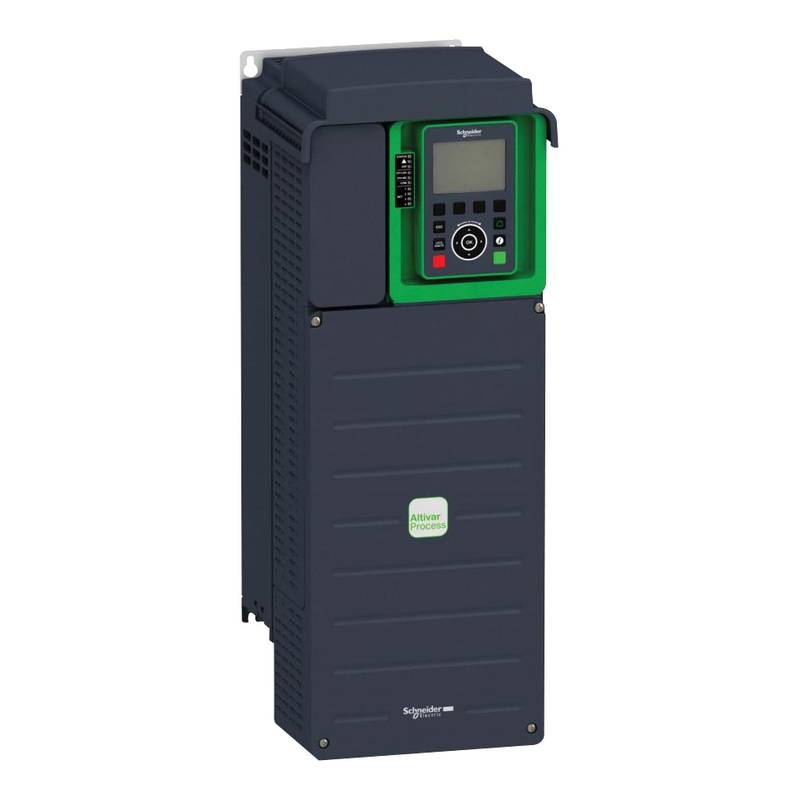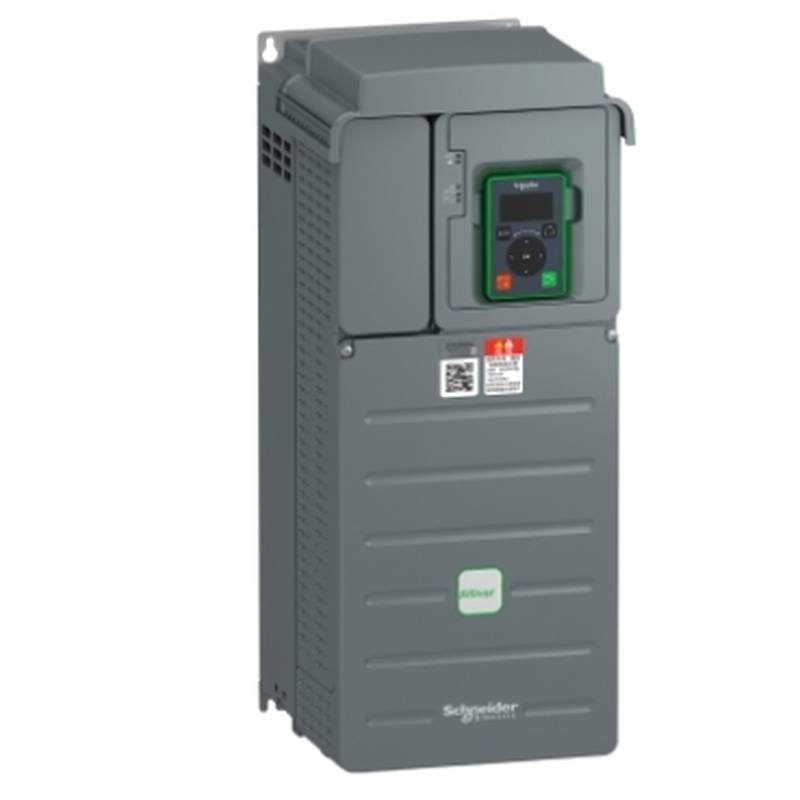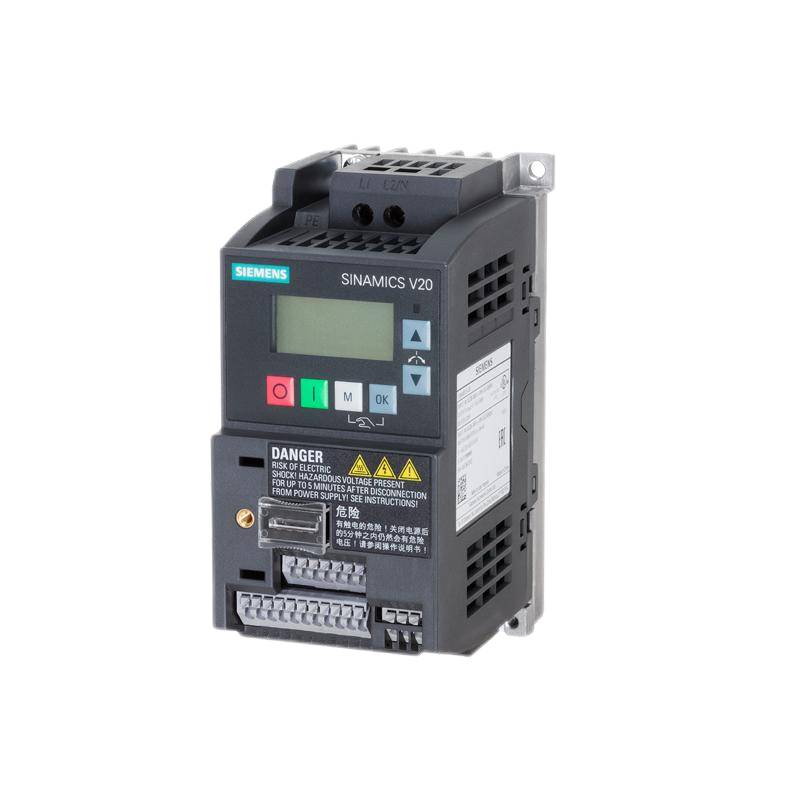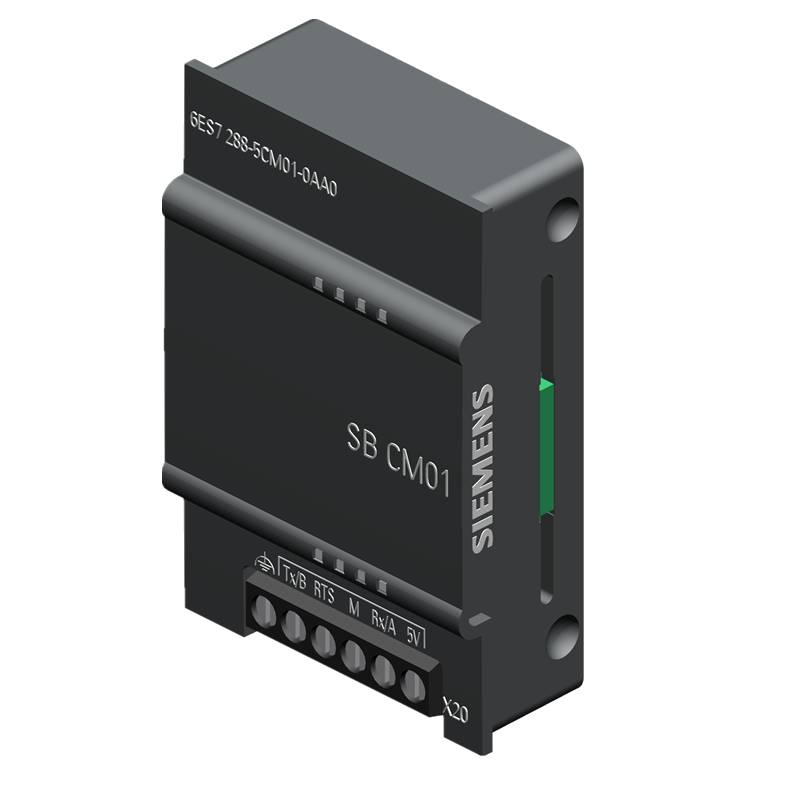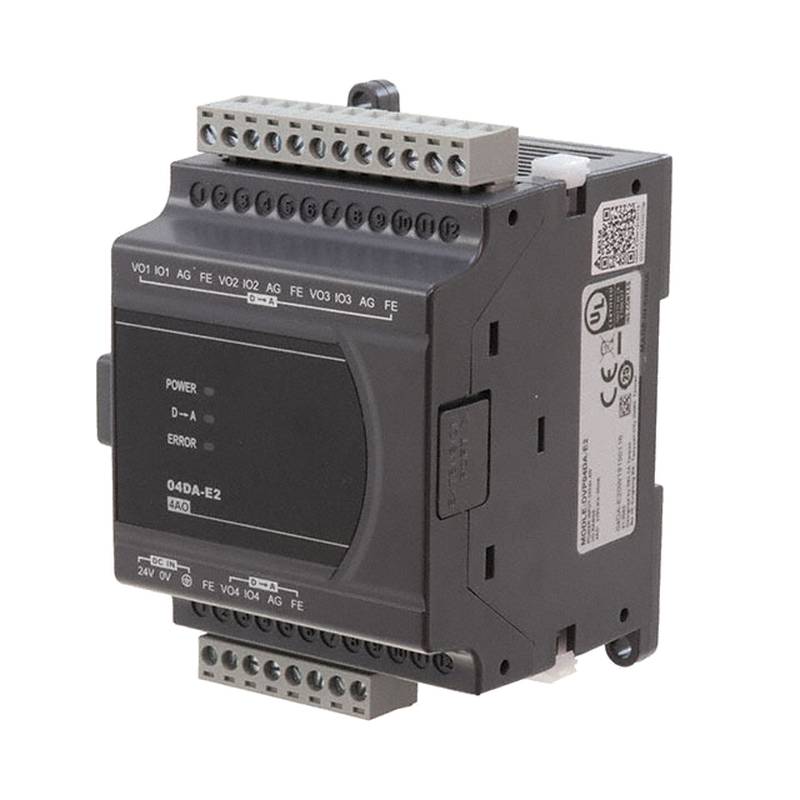
The Schneider Electric ATV630D15N4 is a high-performance Variable Frequency Drive (VFD) engineered for precision control and robust operation in demanding industrial environments. This 15kW, 27A drive boasts a comprehensive feature set designed to optimize motor performance, enhance energy efficiency, and ensure operational reliability across a wide spectrum of applications. Its IP21 rating provides essential protection against solid objects larger than 12.5mm and dripping water, making it suitable for general-purpose installations. Key advantages include advanced motor control algorithms, built-in safety functions, and seamless integration capabilities with automation systems.
Product Specifications
| Parameter | Value |
| :----------------------- | :--------------------------------------- |
| Model Number | ATV630D15N4 |
| Rated Power | 15 kW |
| Rated Current | 27 A |
| Voltage Rating | 380-480V, 3 Phase |
| Protection Rating | IP21 |
| Control Type | Sensorless Vector Control, DTC (Direct Torque Control) |
| Mounting Type | Wall-mounted, cabinet |
| Operating Temperature | -15°C to 50°C |
| Dimensions (H x W x D) | 505 mm x 250 mm x 240 mm |
| Weight | 14.8 kg |
Core Features & Market Positioning
The Schneider ATV630D15N4 stands out in the industrial VFD market due to its robust Direct Torque Control (DTC) technology, which provides superior motor speed and torque regulation without the need for a motor encoder. This translates to enhanced dynamic performance, quicker response times, and improved process accuracy, particularly in applications with frequent load variations. The drive's advanced thermal management system ensures reliable operation even under heavy loads, contributing to extended equipment lifespan. Its competitive positioning is further solidified by Schneider Electric's reputation for quality, reliability, and comprehensive support, making it a preferred choice for engineers seeking a dependable and high-performing solution. The integrated safety functions, such as Safe Torque Off (STO), are critical for compliance with modern machinery safety standards, further differentiating it from basic VFD offerings.
Key Application Scenarios
This VFD is exceptionally well-suited for a variety of demanding industrial applications. Its precision control capabilities make it ideal for variable torque applications like pumps, fans, and compressors, where energy savings are paramount. In material handling systems, such as conveyors and elevators, the ATV630D15N4 ensures smooth acceleration and deceleration, protecting goods and equipment. It is also a strong candidate for process control in sectors like water treatment, food and beverage, and HVAC, where precise speed and torque management are essential for maintaining product quality and operational efficiency. The drive's ability to handle harsh environments, supported by its IP21 rating, extends its applicability to general industrial machinery where dust and water ingress are potential concerns.
Practical System Integration Guidance
Integrating the Schneider ATV630D15N4 into existing or new systems is streamlined by its user-friendly design and comprehensive connectivity options. Wiring should be performed by qualified personnel, ensuring adherence to local electrical codes and the drive's specific wiring diagrams for power and control circuits. The drive supports various communication protocols, including Modbus, EtherNet/IP, and Profibus, facilitating seamless integration with SCADA systems and PLCs. For initial commissioning, the drive offers intuitive parameter setup via its local HMI or through configuration software like EcoStruxure Machine Configuration Tool. Key parameters to configure include motor data, application type, and desired control mode (e.g., V/f or DTC). Proper grounding and shielding of motor cables are crucial for minimizing electromagnetic interference (EMI) and ensuring optimal performance.
Operation and Risk Mitigation
Safe operation of the Schneider ATV630D15N4 is paramount. Before initial power-up, verify all wiring connections and ensure the motor is correctly phased. Always refer to the manufacturer's installation and operation manual for detailed safety instructions. The Safe Torque Off (STO) function must be properly wired and tested to prevent unexpected motor starts, a critical safety measure for personnel working near machinery. Common troubleshooting scenarios often involve motor overload faults, which can typically be addressed by verifying motor nameplate data against drive parameters, ensuring adequate ventilation, or checking for mechanical issues in the driven load. For unexpected behavior, consulting the drive's fault code directory in the manual is essential for accurate diagnosis and resolution.
Scalability & Long-Term Value
The ATV630 series, including the D15N4 model, offers significant scalability and long-term value. Its compatibility with Schneider Electric's broader EcoStruxure platform allows for enhanced monitoring, diagnostics, and predictive maintenance capabilities, transforming a standalone drive into an integrated component of a digitalized industrial environment. The drive's modular design and robust build quality contribute to its longevity, minimizing the total cost of ownership. Furthermore, the availability of software updates and ongoing technical support from Schneider Electric ensures that the drive can adapt to evolving industry standards and technological advancements, protecting the investment and maintaining operational efficiency over its lifespan.
Frequently Asked Questions
Q1: What are the primary benefits of using the Schneider ATV630D15N4 VFD?
The ATV630D15N4 offers superior motor control through DTC technology, ensuring precise speed and torque. It significantly enhances energy efficiency by matching motor output to demand, reducing operational costs. The drive also incorporates built-in safety functions like STO for enhanced workplace safety.
Q2: How does the ATV630D15N4 handle different motor types?
This VFD is designed to control a wide range of AC induction motors. Its sensorless vector control and DTC capabilities adapt to various motor characteristics, optimizing performance without requiring motor encoders. Proper motor data input during configuration is key.
Q3: What is the typical power consumption of the ATV630D15N4?
The power consumption is directly related to the load on the motor it controls and the speed. At its rated 15kW output, it will draw power accordingly, but its efficiency means it consumes less energy than traditional fixed-speed motor starters for variable-load applications.
Q1: What is the IP21 rating of the Schneider ATV630D15N4, and what does it signify for installation?
The IP21 rating means the drive is protected against solid objects larger than 12.5mm and from vertically falling water droplets. This makes it suitable for general indoor industrial environments where direct water spray is unlikely.
Q2: Can the ATV630D15N4 be installed in dusty or humid conditions?
While IP21 offers some protection, it is not fully dust-tight or waterproof. For very dusty or high-humidity environments, consider installing the drive within a suitable enclosure or selecting a model with a higher IP rating to ensure longevity and prevent faults.
Q3: What are the recommended ambient temperature limits for operating the ATV630D15N4?
The drive is rated for operation within an ambient temperature range of -15°C to 50°C. Exceeding these limits, especially the upper threshold, can lead to reduced performance or thermal shutdown, necessitating adequate ventilation.
Q1: What are the key applications for the Schneider ATV630D15N4 VFD?
This VFD excels in variable torque applications such as pumps, fans, and compressors, where energy savings are critical. It is also widely used in material handling, HVAC systems, and general industrial machinery requiring precise motor speed and torque control.
Q2: How does the ATV630D15N4 contribute to energy savings in pump and fan applications?
By precisely controlling motor speed based on system demand, it avoids running motors at full speed unnecessarily. This quadratic relationship between speed and power consumption leads to substantial energy savings, especially in variable-flow systems.
Q3: Is this VFD suitable for high-dynamic applications requiring rapid speed changes?
Yes, the Direct Torque Control (DTC) technology embedded in the ATV630D15N4 provides excellent dynamic performance, enabling rapid acceleration, deceleration, and precise torque response, making it suitable for applications with demanding transient requirements.
Q1: How do I connect the motor to the Schneider ATV630D15N4?
Connect the motor's power leads (U, V, W) to the corresponding output terminals on the VFD. Ensure all connections are secure and properly insulated. Always refer to the wiring diagram in the product manual and follow electrical safety protocols.
Q2: What communication protocols does the ATV630D15N4 support for system integration?
The drive supports popular industrial communication protocols, including Modbus, EtherNet/IP, and Profibus. This allows for seamless integration with PLCs, SCADA systems, and other automation devices for remote control and monitoring.
Q3: What is the recommended procedure for initial parameter configuration of the ATV630D15N4?
Start by entering the motor's nameplate data accurately. Then, select the appropriate application macro and configure basic parameters like ramp times and speed references. Using Schneider's EcoStruxure Machine Configuration Tool can simplify this process.
Q1: What are the safety features of the Schneider ATV630D15N4?
A primary safety feature is the Safe Torque Off (STO) function, which prevents the motor from being started unintentionally. It also includes overload protection and fault monitoring to prevent damage and ensure personnel safety during operation and maintenance.
Q2: How can I troubleshoot a motor overload fault on the ATV630D15N4?
Check if the motor's rated current and power in the drive parameters match the motor nameplate. Ensure adequate motor cooling and check for any mechanical obstructions or excessive load on the driven equipment. Verify ambient temperature is within limits.
Q3: Where can I find information on specific fault codes for the ATV630D15N4?
The official Schneider Electric installation and operation manual for the ATV630 series provides a comprehensive list of all fault codes, their meanings, and recommended troubleshooting steps. This document is crucial for effective diagnostics.
Q1: How can the ATV630D15N4 be upgraded or integrated into IIoT solutions?
The drive is designed for integration into Schneider Electric's EcoStruxure platform, enabling advanced data collection for IIoT applications. Options include adding communication modules for enhanced connectivity and utilizing software for remote monitoring and analytics.
Q2: What is the long-term value proposition of the ATV630D15N4?
Its robust construction ensures longevity and reliability. The energy savings achieved through efficient motor control reduce operating costs over time. Compatibility with modern automation systems and Schneider's support ecosystem contribute to its sustained value.
Q3: Is the ATV630D15N4 backward compatible with older Schneider Electric control systems?
While specific compatibility depends on the legacy system's communication protocols and hardware, the ATV630 series generally offers flexible integration options. Utilizing appropriate communication modules and ensuring protocol alignment can facilitate integration with many existing systems.














